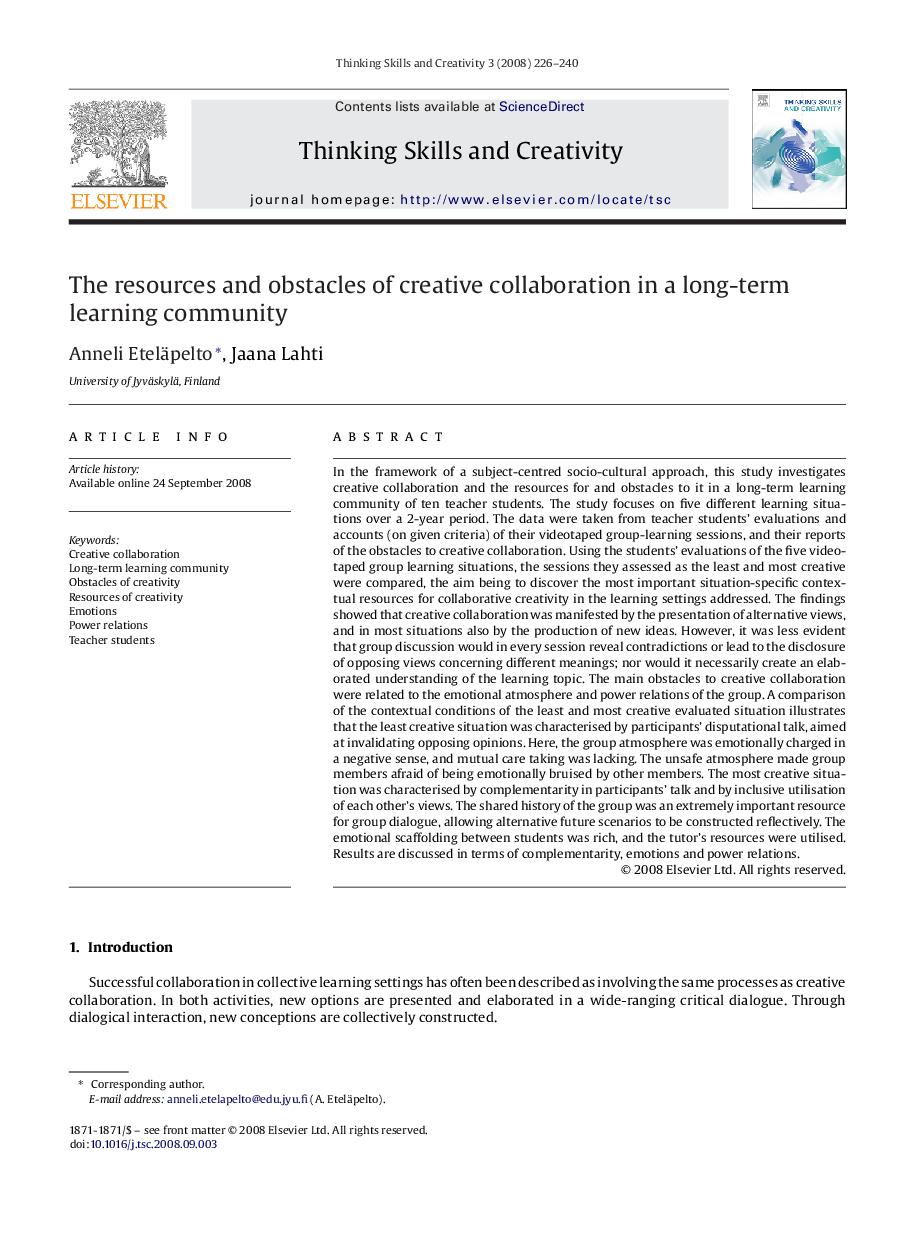| کد مقاله | کد نشریه | سال انتشار | مقاله انگلیسی | نسخه تمام متن |
|---|---|---|---|---|
| 375820 | 622830 | 2008 | 15 صفحه PDF | دانلود رایگان |

In the framework of a subject-centred socio-cultural approach, this study investigates creative collaboration and the resources for and obstacles to it in a long-term learning community of ten teacher students. The study focuses on five different learning situations over a 2-year period. The data were taken from teacher students’ evaluations and accounts (on given criteria) of their videotaped group-learning sessions, and their reports of the obstacles to creative collaboration. Using the students’ evaluations of the five videotaped group learning situations, the sessions they assessed as the least and most creative were compared, the aim being to discover the most important situation-specific contextual resources for collaborative creativity in the learning settings addressed. The findings showed that creative collaboration was manifested by the presentation of alternative views, and in most situations also by the production of new ideas. However, it was less evident that group discussion would in every session reveal contradictions or lead to the disclosure of opposing views concerning different meanings; nor would it necessarily create an elaborated understanding of the learning topic. The main obstacles to creative collaboration were related to the emotional atmosphere and power relations of the group. A comparison of the contextual conditions of the least and most creative evaluated situation illustrates that the least creative situation was characterised by participants’ disputational talk, aimed at invalidating opposing opinions. Here, the group atmosphere was emotionally charged in a negative sense, and mutual care taking was lacking. The unsafe atmosphere made group members afraid of being emotionally bruised by other members. The most creative situation was characterised by complementarity in participants’ talk and by inclusive utilisation of each other's views. The shared history of the group was an extremely important resource for group dialogue, allowing alternative future scenarios to be constructed reflectively. The emotional scaffolding between students was rich, and the tutor's resources were utilised. Results are discussed in terms of complementarity, emotions and power relations.
Journal: Thinking Skills and Creativity - Volume 3, Issue 3, December 2008, Pages 226–240